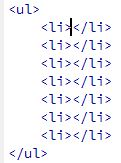If you’re one of the many Adobe FormsCentral users being kicked to the proverbial form curb by the product’s announced retirement, you may have a few lingering questions. Like: “Why did Adobe close this product in the first place?” Or even: “What do I do if I’ve already paid for a membership to FormsCentral?”
But if the Adobe support forum is any indication, the most pressing concern is: “What is going to replace Adobe FormsCentral?”
Adobe users utilized FormsCentral for reasons spanning from simple contact forms, surveys and even converting web forms to PDFs. So you can’t blame users for being overwhelmed by the replacement choices; and there’s certainly no shortage of them. But the reality is, some alternatives are going to suite your specific needs better than others.
Here are the best FormsCentral alternatives based on their different capabilities:
Offline Workflow: JotForm
JotForm is famous for ease of use in building forms, but the company’s new Fillable PDF Form Creator makes them the top choice for offline workflow capabilities.
With this feature, users can seamlessly export forms as fillable PDFs then send it out to their intended recipients. The great thing is that response data from the PDF will be saved in their JotForm account when someone submits a response. The PDF forms are also available offline and can be filled out anywhere.
One common use case for FormsCentral is surveys. Although surveys are a pretty standard capability for any form building service, Survey Monkey makes it their business to excel in this arena – and they do.
When it comes to not only gathering information for respondents, but analyzing the data, Survey Monkey really shines. Whether you’re looking to analyze individual responses, question summaries, or even open-ended responses, they feature incredibly power tools to sift through the information. What’s really cool is a text analysis feature that lets you categorize, code and filter response info by select words and phrases.
If you need a form service that let’s you stay 508 compliant, then you need Formstack. And just a refresher on compliance codes: 508 compliant means that people with disabilities are able to fill out the forms. For this reason Formstack has been one of the popular choices for government agencies who are required to provide 508 compliance.
Inventive Interface: Typeform
Typeform is a wonderful option if you’re looking to to really branch away from the standard form building interface. Their one-question-at-a-time usability makes it stand out. While this functionality might not be a best practice for your respondents are using a desktop, it’s mobile practicality is hard to ignore.
Bright, easy, clear buttons make this a very popular choice for mobile, and it’s definitely the biggest departure from what you’re used to from FormsCentral.
Adobe’s closure of FormsCentral has sent users scrambling for alternatives and the options above are alternatives worth looking into. PDF forms are an important part of any business. If you need assistance with transitioning from FormsCentral to another service, or wish to set up your own PDF forms workflow, please contact Candyce Mairs.




